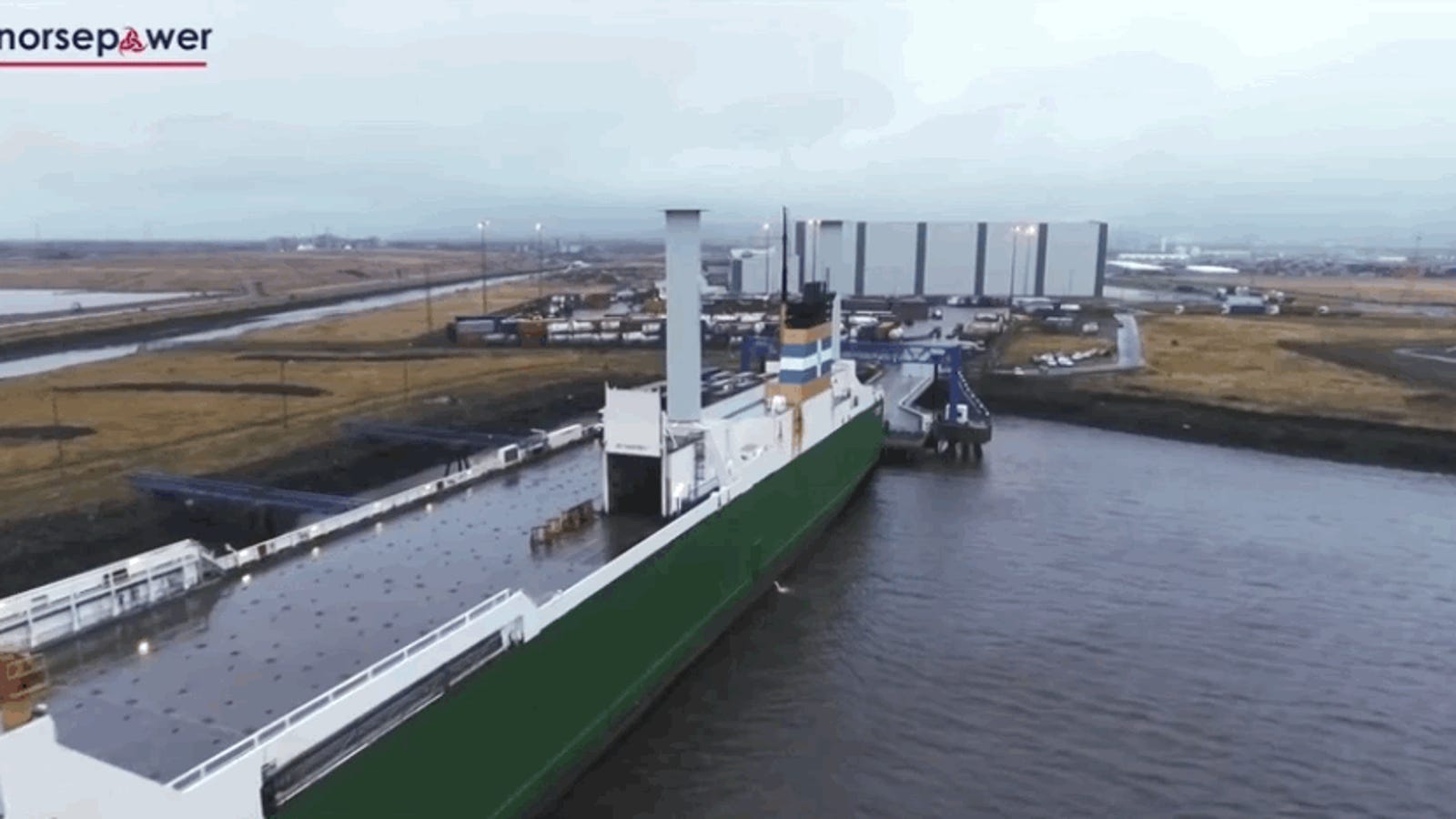https://jalopnik.com/this-is-a-sailboat-and-those-are-sails-1828740311

We are undeniably using up what little remains of Earth’s petroleum, and because of that, it’s getting expensive. To reduce fuel costs, shipping companies are turning back to sailboats. Yes, seriously. Sailboats. But they don’t look like any sails you’ve seen before.
You know sails – most of the time big rectangle things, sometimes big triangle things, almost always (but not always-always) made out of cloth. But while those things in the top gif don’t look like your normal sails, that’s what they are. They just don’t work like any sail you’ve ever seen before.
Most sails you’ve seen rely on the wind directly acting against them to provide propulsion. But these new types of sails, known as “rotor sails” rely on a physics principle called the Magnus Effect. Here, I’ll let the people with delightfully thick Finnish accents from Norsepower, the company that makes them, explain it:
Okay, so that video is more concentrated on how much money shipping companies can save with rotor sails over how it actually works. But you don’t need a rotor sail to see the Magnus Effect with your own eyes. All you really need is a basketball and a really huge dam:
The spinning of an object – be it a Rotor Sail or a basketball – drags air around it as it spins. That creates an area of lower pressure on one side of the object, which pulls the object forward.
(If you know anything about how airplane wings work, or even traditional sails made in the past couple of centuries or so, they work on similar principles of utilizing low pressure to induce movement. In the case of airplane wings, the movement is upward, in the case of sails, the movement is forward.)
By spinning, the rotor sails pull the ship they’re attached to forwards, using nothing but wind power. With enough wind propulsion, ships can ease up on their engines, saving fuel. Ideally, the engines could be turned off entirely.
And while all of this is seemingly magical and great, it’s easy to dismiss the rotor sail as one of those fanciful technologies that you read about somewhere as a “concept” that never actually gets used. Sure, the Finns can put it on one ship, but that’s usually it.
Not the case here, however. That’s because the world’s largest shipping company, Maersk, is installing it on one of its ships, the Pelican (with video of the installation here), the Wall Street Journal reports:
Danish giant Maersk Tankers said Thursday it has installed 100-foot-tall rotating cylinders on one of its product tankers, adding devices that are effectively high-tech sails that could cut the vessel’s fuel bill by up to 10%. If the system proves out during testing, Maersk could use the technology on dozens of ships in its 164-tanker fleet.?
The WSJ notes that Maersk spends over $3 billion on fuel a year, so a 10 percent reduction fleet-wide could result in massive savings, more than enough to cover the cost of up to €2 million of installing rotor-sails on a ship.
And they’re not just being put on tankers, either, World Maritime News says:
With the installation on the Maersk Pelican, there are now three vessels in daily commercial operation using Norsepower’s Rotor Sails.
These also include M/V Estraden, a Bore vessel offering a Ro-Ro and general cargo service between the UK and the Belgium, Viking Grace, a Viking Line cruise-ferry travelling between Finland and Sweden.?
You always thought that in the future, we’d all be riding around on jet-powered ekranoplans.
Nah.
We’re going back to sailboats.
via Gizmodo https://gizmodo.com
August 31, 2018 at 11:15AM
